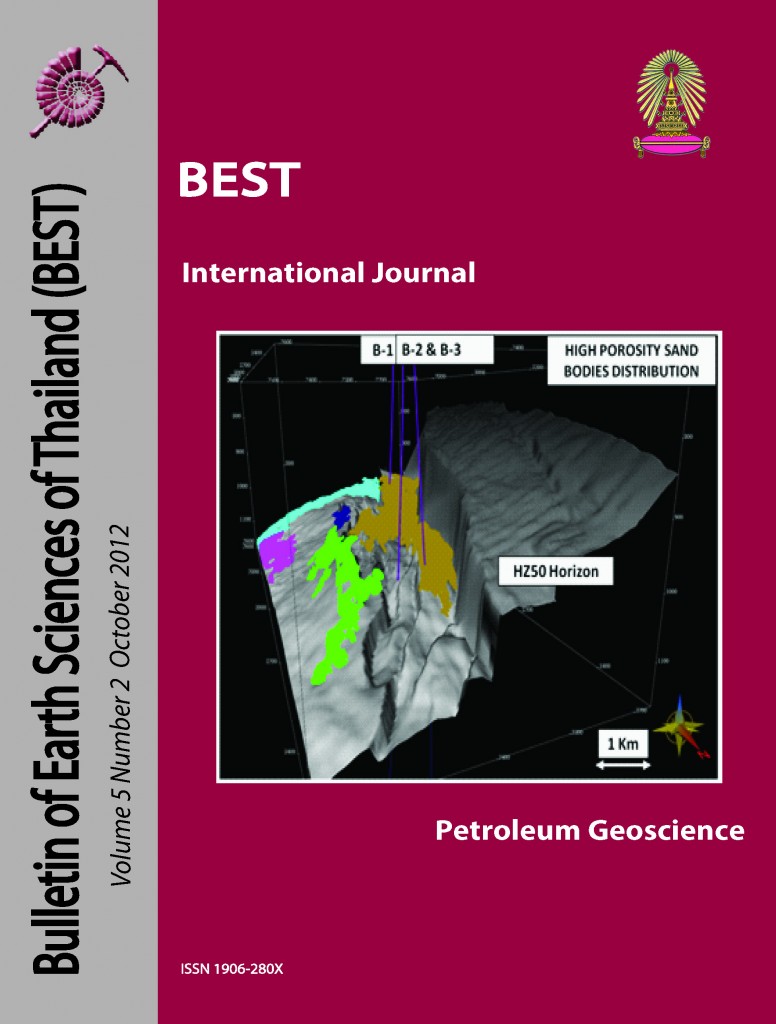Seismic Sequence Stratigraphy Analysis in the Gulf of Moattama, Offshore Myanmar.
Main Article Content
Abstract
The Gulf of Moattama is the shallow embayment at the northern-most end of the Andaman Sea and is mainly composed of Miocene to Plio-Pleistocene deltaic offlap and slope sediments derived from the interior basins of Myanmar which may have potential prospectivity for hydrocarbons. To assess this potential, sequence stratigraphic analysis using 2D seismic data, well data and biostratigraphic data was carried out to determine the evolution and distribution of depositional environments taking into account the affects of significant changes in sediment supply, relative sea level change, and subsidence rates through time. Understanding the relationships between sediment depositional processes and the controlling factors on these processes is very useful in exploration within the oil and gas industry. Based on all data, depositional sequences were interpreted by analyzing the character of well logs, biostratigraphic information and 2D seismic data. As a result, eight sequence boundaries were mapped from the base deltaic complex to the seafloor. From this analysis, the best possible reservoir distributions in this area should be found in the lowstand deposits within the turbidite zones associated with sequences 3, 4 and 5 that were deposited during the Late Pliocene to Early Pleistocene. These potential reservoirs may be trapped as ponded turbidites or draping over older structures. Another area that may have good potential reservoirs is in the incised valleys fills which occur prominent when the sea level falls.
Article Details

This work is licensed under a Creative Commons Attribution-NonCommercial-NoDerivatives 4.0 International License.
Copyright © 2008 Department of Geology, Faculty of Science, Chulalongkorn University. Parts of an article can be photocopied or reproduced without prior written permission from the author(s), but due acknowledgments should be stated or cited accordingly.
References
Wornardt, W.J, Shaffer B., and Vail P.R., 2001. Revision of the late Miocene, Pliocene and Pleistocene Sequence Cycles, Gulf Coast Association of Geological Societies, Volume LI, p.478.


